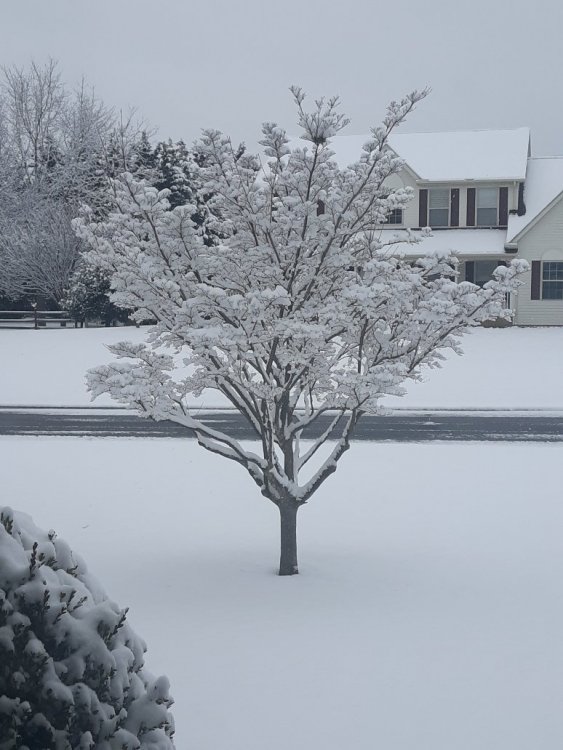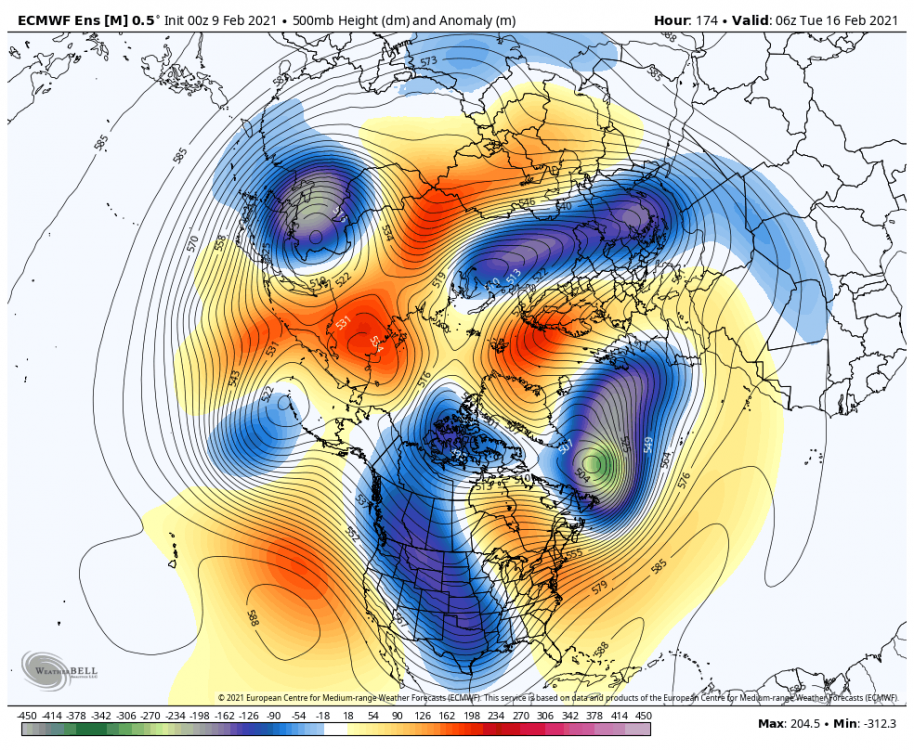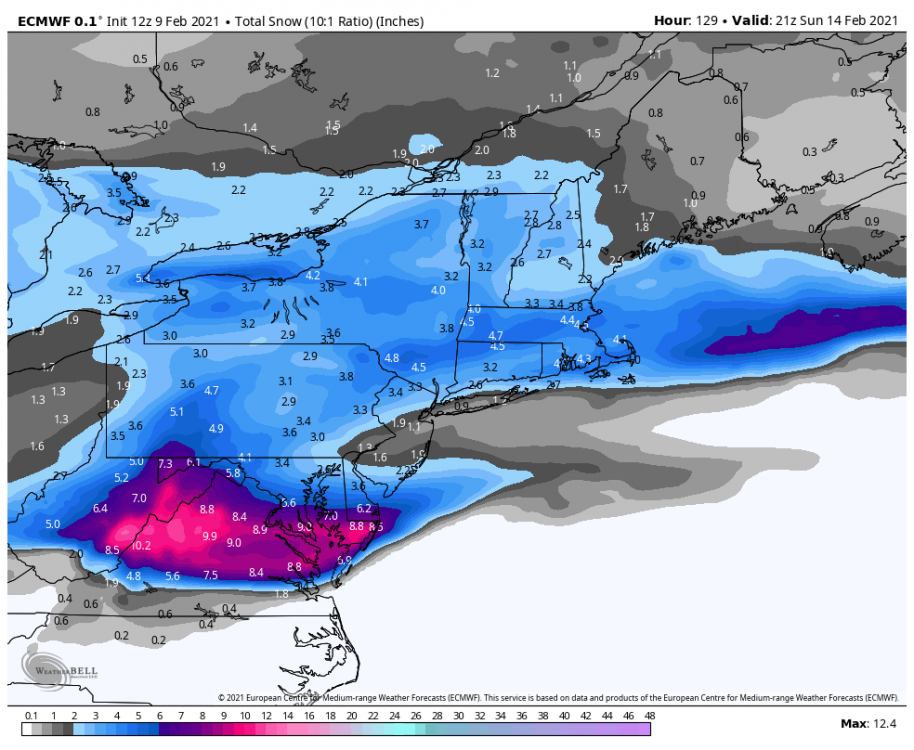
frd
Members-
Posts
6,854 -
Joined
-
Last visited
Content Type
Profiles
Blogs
Forums
American Weather
Media Demo
Store
Gallery
Everything posted by frd
-
Feb Long Range Discussion (Day 3 and beyond) - MERGED
frd replied to WinterWxLuvr's topic in Mid Atlantic
More focused on the snow mean, and agree on what you mention, those predominant - AO states in the winter and espcially when associated with the SSWE , although we had blocking in December before the official reversal, is that we will see the NAM state oscillate negative again, like those dripping paint referecnes and we should get another blocking period in the AO during March. HM did mention the end of this month as having some potential based on a Scandi /East based developments . -
Feb Long Range Discussion (Day 3 and beyond) - MERGED
frd replied to WinterWxLuvr's topic in Mid Atlantic
I give up on those maps, the EPS has been beyond bad in verification snowfall. The means, when they were robust, for the period around this time and going into the middle of next week are now meh. Horrible is all I can say. Blocking is going away, and as HM stated the effects/influence of the SSWE are beginning to fade. -
It sucks being on the East coast , even Nashville is in deep winter. https://forecast.weather.gov/MapClick.php?x=145&y=95&site=ohx&zmx=&zmy=&map_x=145&map_y=95#.YCa3rmhKiUk
-
More poor luck chaos. We know it is easier to score in Jan or Feb, ( our best climo naturally ), versus December. The + PNA arrived at a time when Canada was loaded with Pac puke air. A better Pac now would have helped. But, its more than that. Have you seen this year, and at times in the last 4 years, the increasing difficulty to get into a good snow pattern for our area. There is a reason for that too.
-
Feb Long Range Discussion (Day 3 and beyond) - MERGED
frd replied to WinterWxLuvr's topic in Mid Atlantic
Have said over and over that the WAR , and the configuration of warmth is a player. HM even stated the above average NW Atlantic SST anomaly does exist. Bluewave mentioned it had a hand in the wet period last Summer. It seems it is a major factor in keeping the Eastern Untied States warmer than normal. Also, in the summer it may play a role in higher overnight lows and increased dew points as well. National Geographic did a special last year on hurricanes in the Atlantic. In it it was mentioned that the periphery of the WAR when looked at over time seems to be edging more Western and North putting the major cites of the Eastern seaboard at risk for a powerful hurricane in the years ahead. -
Pretty bad calls about cold in the East. In this 10 day mean the real cold never got into SE Canada and the last few days the cold is lessening, but diminishing core remains out West. I will simply blame the Pac, the Nina and the base state. So, next winter when someone says the AO will go negative or the NAO will go negative I will simply say, so what.
-
Me as well. Have many trees, a few damaged extensively by the March 2018 ice / storm events. I pass on ice. Ice threat looks to diminish for this weekend, and the Euro has not been that convincing with its failures of late. By the way, where the hell did all the cold go ? Seems the models can't forecast East of the Mississippi. And certainly when they forecast cold for the East do not believe it, regardless of the magnitude. Read your posts, about Nina, etc. Makes sense, but damn, there was across the board consensus form the EPS, GEFS, GEM ensembles for a period of cold that would feature below 32 degrees for days on end. And it went POOF ! I recall even mets stating the cold that was forecasted was very impressive. I have been busy at work and thank goodness. I jump off a bridge if I were tracking all these failures the last few days and going back even months.
-
My kind of ice "whimper".
-
Feb Long Range Discussion (Day 3 and beyond) - MERGED
frd replied to WinterWxLuvr's topic in Mid Atlantic
A little old but still a nice illustration -
Feb Long Range Discussion (Day 3 and beyond) - MERGED
frd replied to WinterWxLuvr's topic in Mid Atlantic
Progressive could mean colder and that makes the ICON evolution a possibility. Models will continue to have problems in the short range. -
Well, this event here was the biggest of the season ( ha ha ) with 4 inches before compaction. Looks pretty on the trees. Yippee !
-
Feb Long Range Discussion (Day 3 and beyond) - MERGED
frd replied to WinterWxLuvr's topic in Mid Atlantic
Frisbee -
Feb Long Range Discussion (Day 3 and beyond) - MERGED
frd replied to WinterWxLuvr's topic in Mid Atlantic
Take some kind of Miracle to get snow and cold. I've given up on this winter , looks like the cold air next week erodes and all the blocking has delivered practically nothing. -
Feb Long Range Discussion (Day 3 and beyond) - MERGED
frd replied to WinterWxLuvr's topic in Mid Atlantic
I want my snow squalls -
Feb Long Range Discussion (Day 3 and beyond) - MERGED
frd replied to WinterWxLuvr's topic in Mid Atlantic
Recall there was actually quite a bit of decent consensus from the ensembles that decent cold was coming but now it really doesn't look that great, most of the cold is out West -
Feb Long Range Discussion (Day 3 and beyond) - MERGED
frd replied to WinterWxLuvr's topic in Mid Atlantic
Honestly thinking that this is the last chance at getting lucky for while in terms of significant area wide snowfall in areas that have missed most of the pathetic snow this season so far. . Hopefully changes with the TPV take place in the days ahead and the Euro OP track may trend more Southward in time . EPS is starting to hint at that. Certainly according to some, including HM the crazy situation out West may cause last minute model swings downstream and effect storm evolution even at short range. I mean really, - 6 AO and all that arctic cold. I am not interested in ice or snow to rain. I want an all snow event. -
Feb Long Range Discussion (Day 3 and beyond) - MERGED
frd replied to WinterWxLuvr's topic in Mid Atlantic
Very interesting, the TPV fujiwara effect. So what does this mean? Well, expect the unexpected. When it moves East eventually, will it shear out ? What will be the effect on confluence be ? More questions than answers. -
Feb Long Range Discussion (Day 3 and beyond) - MERGED
frd replied to WinterWxLuvr's topic in Mid Atlantic
-
Feb Long Range Discussion (Day 3 and beyond) - MERGED
frd replied to WinterWxLuvr's topic in Mid Atlantic
-
Northern Delaware included I hope. HM seems annoyed by models today and folks complaining. I am watching that TPV out West. Strange changes today overall.
-
At hour 30 looks better in the Midwest.
-
Feb Long Range Discussion (Day 3 and beyond) - MERGED
frd replied to WinterWxLuvr's topic in Mid Atlantic
Interesting, even though the talk focuses on areas South of us. -
Feb Long Range Discussion (Day 3 and beyond) - MERGED
frd replied to WinterWxLuvr's topic in Mid Atlantic
-
Feb Long Range Discussion (Day 3 and beyond) - MERGED
frd replied to WinterWxLuvr's topic in Mid Atlantic
I know I will be keeping a close look at the movement of the TPV , as HM mentioned this yesterday. The brunt of the arctic cold is out West but changes will most likely occur. Again, I am not searching for record breaking cold here, which may simply bring dry, but a cold running event that punches a little gusto and provides better coverage. . -
Feb Long Range Discussion (Day 3 and beyond) - MERGED
frd replied to WinterWxLuvr's topic in Mid Atlantic
GEFS agrees. Worse of winter out West.



.thumb.gif.4e1ae3286d4bafd199d90a37923dee3c.gif)
.thumb.gif.770a45ffa06e2b9ffbca744b05013b6e.gif)





.thumb.gif.38e1ea0fff6e40675ccfffb31738cebb.gif)